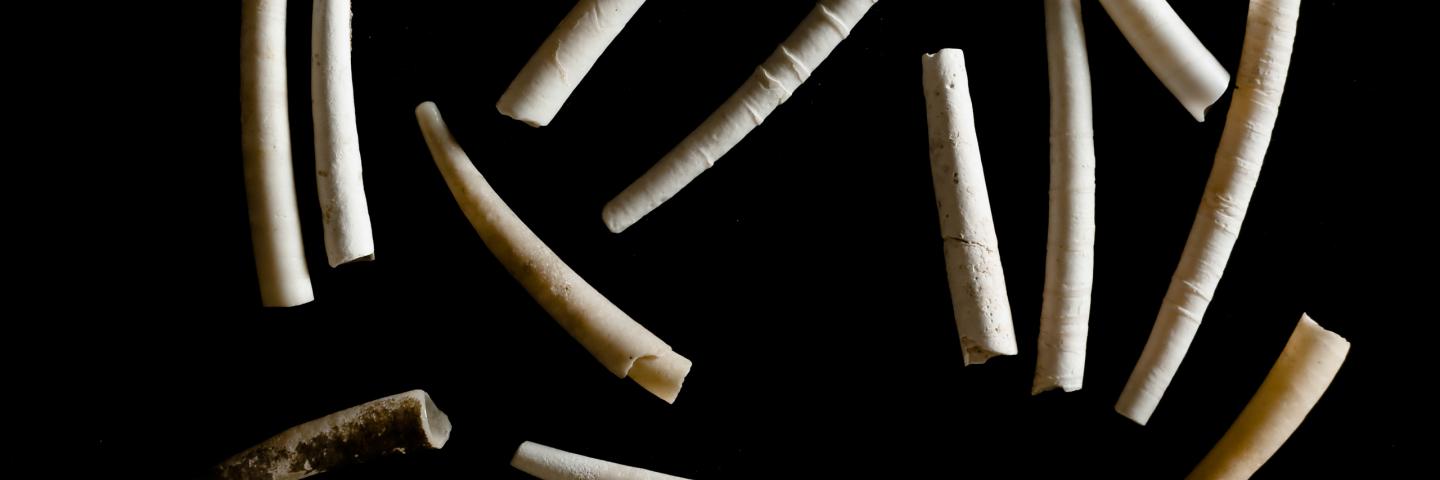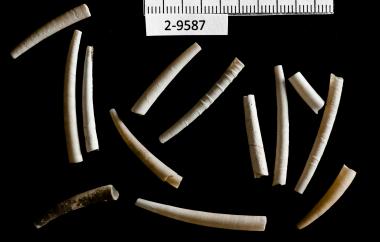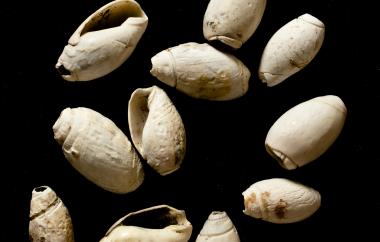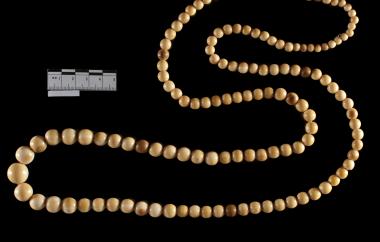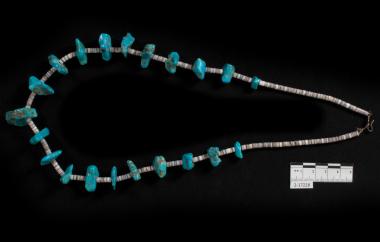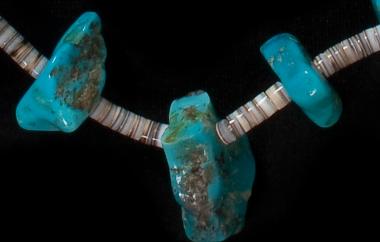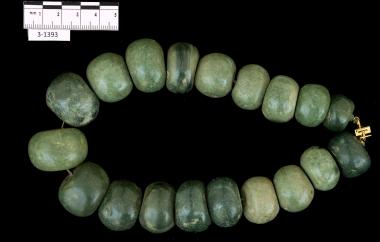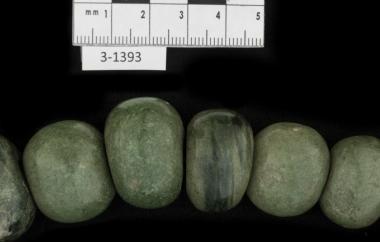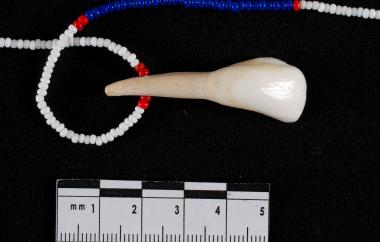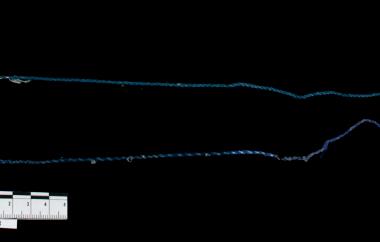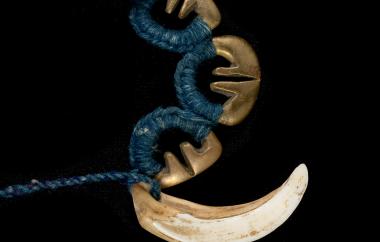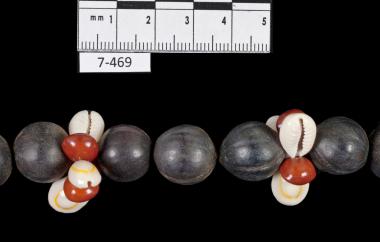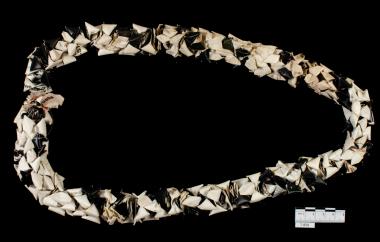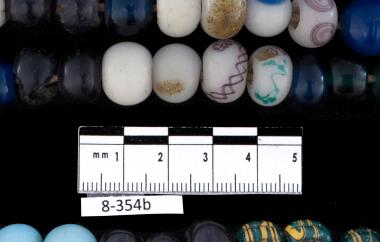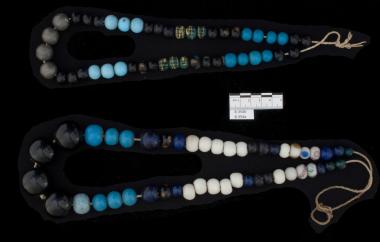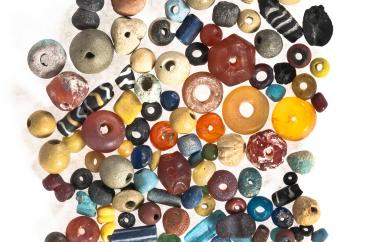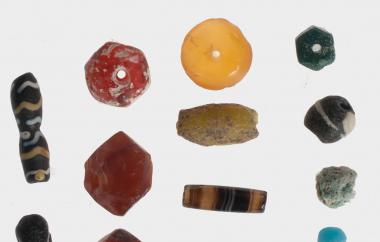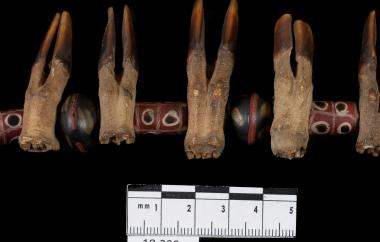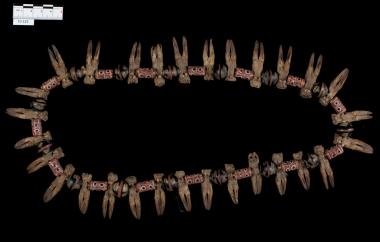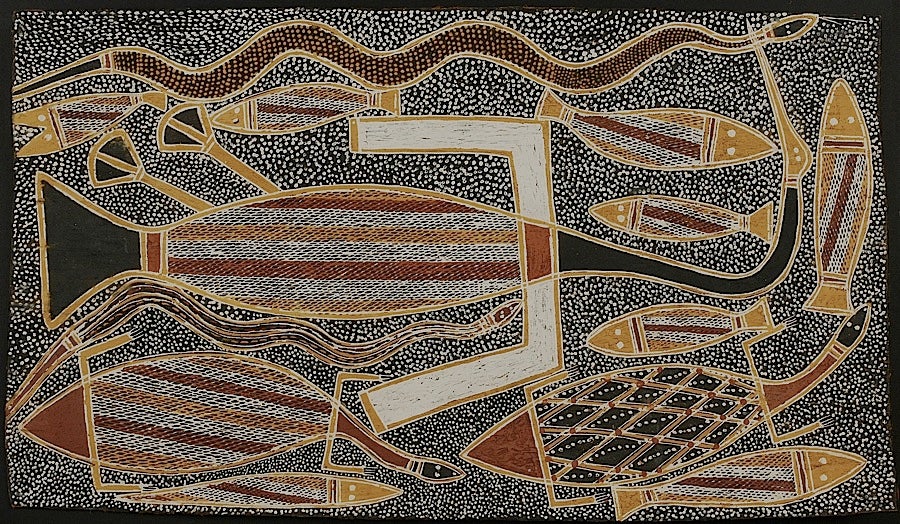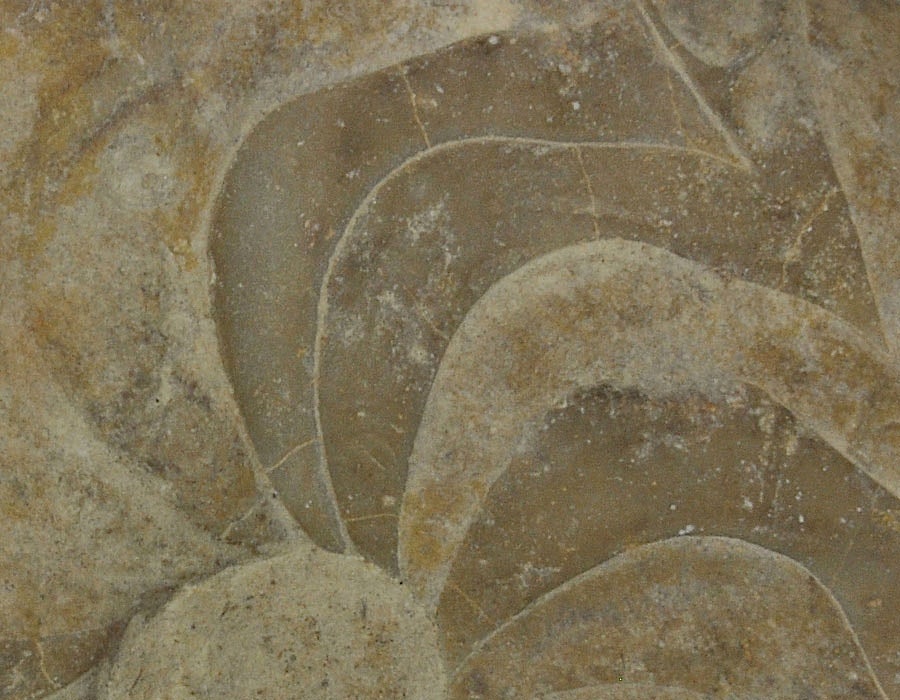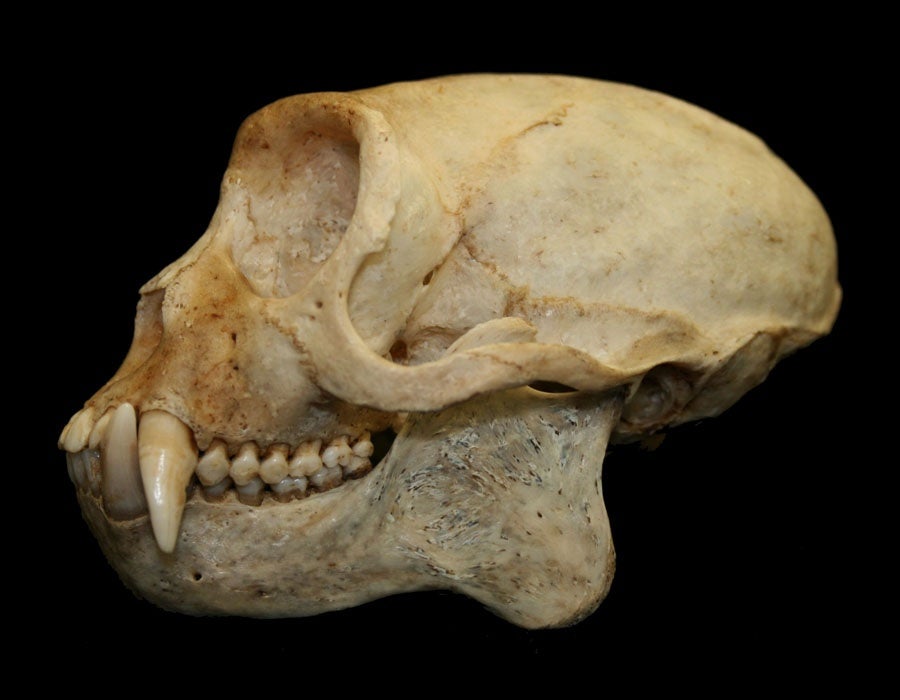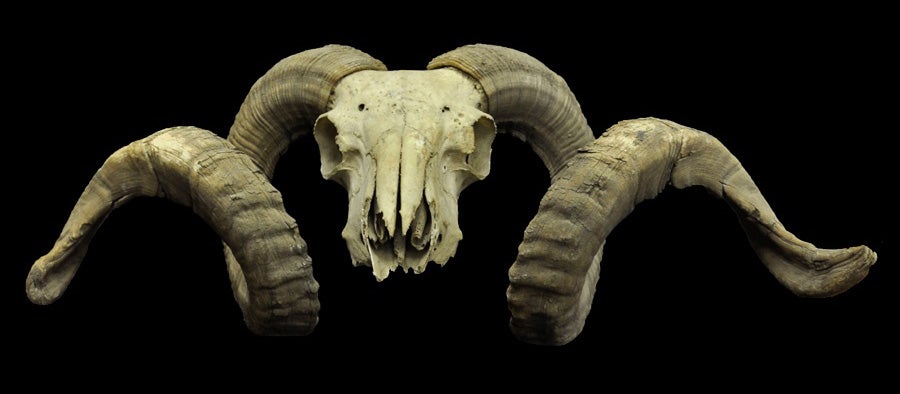People have been collecting, stringing, and sewing beads for more than 120,000 years. Some of the earliest beads, made of tiny seashells, were found in North Africa and the Middle East. As our ancestors spread around the world, they left a trail of beads behind them. People have been making and wearing beads ever since.
Almost anything can become a bead; a shell, a stone, a seed. Beads are beautiful, and their use reveals much about individual style and aesthetics. Their materials may document the physical environment, and their use in ritual, religion, and politics reflects societal history, economy, and values. Whether Venetian glass beads in the Congo, Olmec jade, or Pacific coastal marine shells in archaeological sites of interior Oregon or Washington, it is clear that the value of beads was enhanced by the distance they traveled and the labor needed to extract their raw material, manufacture the ornaments, and move them to a consumer. Added value may accumulate through the passage of time, since beads and beadwork are handed down over generations as treasured heirlooms.
The beads shown here are a sample from the museum's collections and illustrate a wealth of materials from around the globe, ranging from pre-Columbian ceramics and jade to African ostrich shell beads.
Images © UO Museum of Natural and Cultural History. Production of this gallery received generous funding from The Ford Family Foundation and the Oregon Cultural Trust.
Further Reading:
Dubin, Lois Sher
2009 The History of Beads: From 100,000 B.C. to the Present. Revised and Expanded Edition. Abrams, New York, N.Y.
Francis, Peter, Jr.
1994 Beads of the World. Schiffer Publishing, Ltd. Atglen, PA.
Crabtree, Carolyn and Pam Stallebrass
2002 Beadwork: A World Guide. Rizzoli International Publications, New York, N.Y.
Cat. #2-9587
Dentalium shells were traded inland by Native Northwest Coast peoples of Vancouver Island
Cat. #2-9557 and 2-9542
Glass trade beads, Upper Columbia River, and glass trade beads detail.
Cat. #2-9610
Olivella shell beads similar to these and more than 8,000 years old were found in interior Washington
Cat. #2-15749
Ivory bead necklace, Alaska, acquired between 1917 and 1920
Cat. #2-15749
This necklace is made of fossil mammoth ivory with one bead of walrus tusk (second from right).
Cat. #2-17228
Turquoise and heishi shell necklace, 20th century, Native American, Southwestern US
Cat. #2-17228
Resins and dyes are often added to turquoise; homogeneity in these heishi suggests machine manufacture
Cat. #3-557
Ceramic bead necklace, Colima Culture, Western Mexican Protoclassic (ca. 100 BCE to AD 250)
Cat. #3-1393
Royal green “jade” necklace, Olmec (1000-500BCE)
Cat. #3-557
Tiny figurines resemble Mesoamerican "pretty lady" figurines
Cat. #3-1393
Jade from central America consists of the mineral jadeite
Cat. #5-307b
Glass beads are combined with bovid teeth
Cat. #5-318
Bung or lingling-o necklace with cast metal pendant and teeth, Philippines
Cat. #5-307b, d
Glass beads and teeth, Philippines.
Cat. #5-318
Ifugao smiths in northern Luzon cast ornaments locally called bung or lingling-o
Cat. #7-461
String of gastropod shells, American Samoa
Cat. #7-461
Tiny snail shells form this necklace
Cat. #7-469
Necklace of seeds and cowry shells, American Samoa
Cat. #7-469
White cowry shells, red seeds from Adenanthera or Erythrina sp, and lantern tree or tianina endocarps (Hernandia nymphaefolia)
Cat. #7-858
Paper ula, American Samoa
Cat. #8-354a, b
Tamasay necklaces are worn by Ainu women on special occasions and displayed in household shrines
Cat. #8-354a, b
Heirloom glass bead necklace (tamasay), Ainu, Japan
Cat. #8-647
Glass, stone and faience beads, Saudi Arabia
Cat. #8-647
These loose beads were collected in Saudi Arabia in the 1950s, but they may be far older
Cat. #10-229
Collected between 1881 and 1888; duikers are a small African antelope
Cat. #10-229
Trade beads and duiker hooves necklace, Congo
Cat. #10-1443
Ostrich egg shell beads, East Africa, probably Kenya or Tanzania
Cat. #7-1237 Beaded collar with seed beads, dyed large beads, and shells, Papua New Guinea, Sepik River
Cat. #7-1237 Detail. Beaded collar with seed beads, dyed large beads, and shells, Papua New Guinea, Sepik River
Cat. #10-1633
Beaded collar on wire and hide, Kenya
